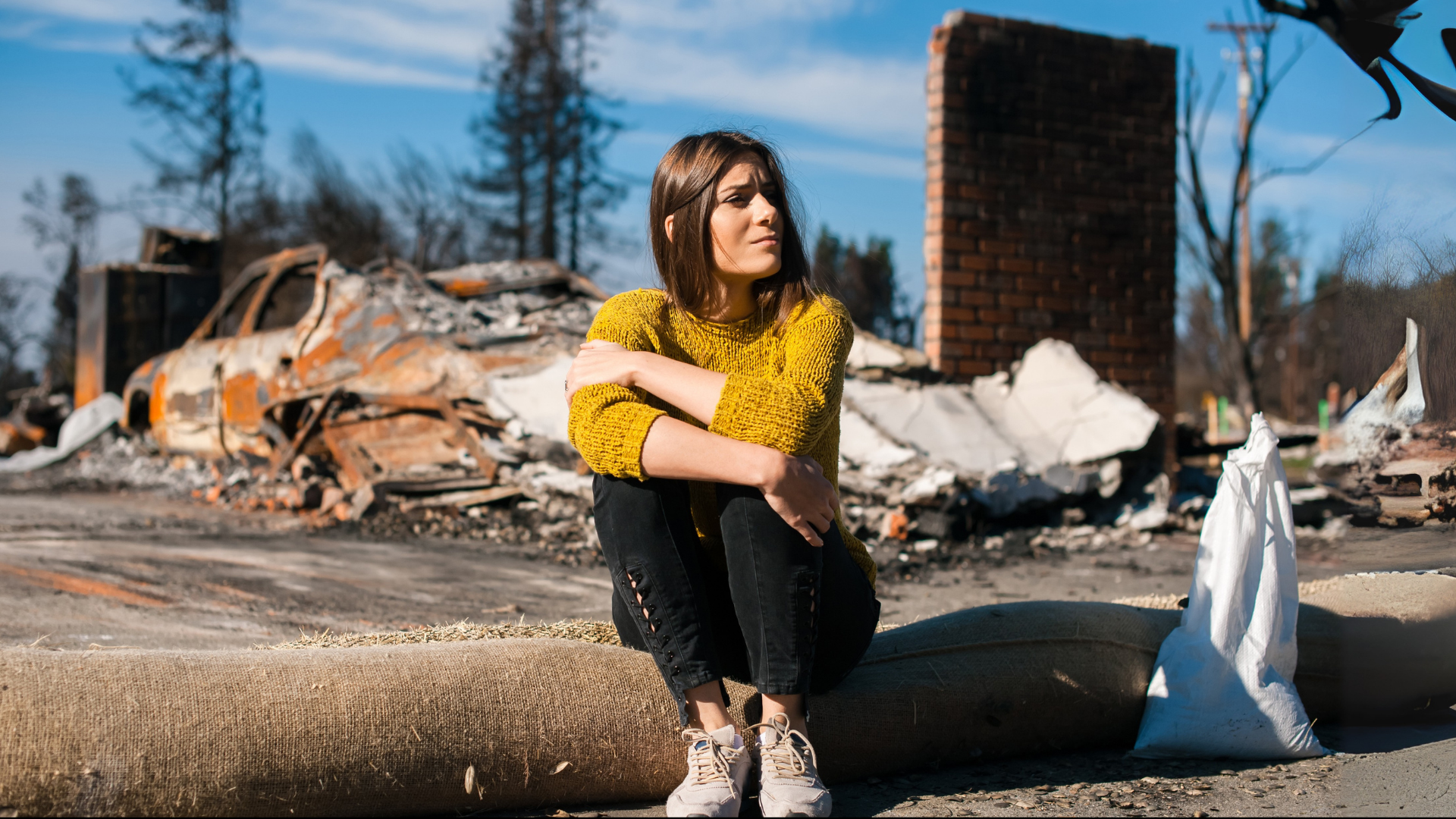Emergency Readiness for Health and Domestic Violence Centers
By Moira McLaughlin
October 10, 2025
Hurricanes in Florida. Floods in North Carolina. Fires in California. The COVID-19 pandemic. The frequency and harm of natural disasters and public health emergencies is increasing. And with it, violence.
Evidence suggests that during emergencies, the rates of domestic violence, human trafficking, and exploitation increase.
Sara Hicks-West, Founding Principal of the Phoenix Collaborative, who has worked to respond to natural disasters, spoke at a recent FUTURES webinar. She talked about how hard it can be to respond to populations impacted by natural disasters that are already experiencing other challenges. Without planning ahead of time, an emergency can take a toll on staff and limit their ability to serve survivors.
How can health centers and domestic violence programs prepare for potential emergencies?
Anna Marjavi, Director of Health Partners + Exploitation at FUTURES, said to start planning today. “The best time to plan for emergencies is now, in steady state conditions. By implementing improved protocols and strengthening community collaborations, health centers and domestic violence programs can strengthen their community outreach and response during public health emergencies and natural disasters.”
Build Partnerships
Millions of women and men have experienced intimate partner violence in their lifetimes. Survivors of domestic violence, human trafficking, and exploitation experience a range of adverse health issues, both physical and mental.
During emergencies, survivors can face isolation and challenges accessing health care or advocacy services. It’s critical that health centers and domestic violence programs can reach them.
“Being prepared starts with building sustainable and fruitful partnerships,” said Marjavi. “Those relationships really matter when emergencies happen, and together, we can consider the needs and pivot to collaborate on the solutions.”

Every Health Cares About Domestic Violence Day, the East Los Angeles Women’s Center delivers cookies to the Los Angeles General Medical Center with a sticker promoting their website and a note: “A sweet reminder of support.”
“Those cookies are a testament to how far we’ve come in the partnership,” said Rebeca Melendez, Associate Director at the Center and speaker at the recent webinar.
How can health centers and domestic violence programs establish partnerships?
- Find potential partners, health centers, domestic violence coalitions or primary care associations nearby. To identify human trafficking programs, see this national directory.
- Meet with leaders from partner domestic violence programs or health centers and use this worksheet to help guide the conversation.
- Use this emergency preparedness checklist and adapt a memorandum of understanding (MOU) to formalize collaborations and develop a referral process.
- Find the state emergency management agencies.
- Reach out to local municipalities, county, and state emergency preparedness advisory groups, and engage community leaders to develop a hyper-local system for reaching those experiencing the greatest barriers.
Establishing partnerships is key to the success of The YWCA San Gabriel Valley, said CEO Debra M. Ward at the webinar. They have provided leadership through three disasters recently: COVID-19, the Monterey Park shooting, and now they are responding to individuals and families affected by a California fire.
Cultivating these partnerships now will help in times of emergencies when you need to reassess how you’re delivering vital services.
Reassess Protocols
Implement protocols now that will provide the framework to be able to adjust to an emergency.
- Adopt the evidence-based CUES Intervention and educate all staff on the dynamics of domestic violence and lessons learned from recent disasters or public health emergencies.
- Provide healing-centered care that promotes healthy relationships for your patients.
- Review procedures for maintaining patient confidentiality, especially related to technology and electronic health records.
During an emergency, traditional ways of communicating will be disrupted. Consider alternative ways of reaching survivors.
- Hire multilingual staff and create multilingual responses.
- Set up secure ways for survivors to reach you.
- Ensure that emergency alert systems include in-language alerts.
- Partner with media to support in-language broadcasting of emergency alerts and updates.
Take Time to Prepare
Preparing for an emergency before it happens will help keep your health center or domestic violence program stable and agile through a crisis, and support both your clients and staff.
“Most recently, we learned a lot during the COVID-19 pandemic in terms of the burden of that public health emergency on people who are experiencing violence and harm,” said Marjavi.
“For survivors of intimate partner violence and human trafficking, we saw increased isolation, increased frequency of abuse, and less interaction with social service providers. It reminded us of the importance of the things that matter, which are touch points and reducing isolation for folks and helping to increase pathways for health and safety.”



